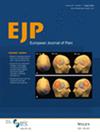Altered Topology of Brain Structural Network in Patients With Migraine Without Aura: A Structural MRI Study
Abstract
Background
Migraine is a neurovascular disease associated with significant morbidity and disability, but its underlying pathophysiology remains elusive. Functional alterations within the brain are frequently observed in individuals with migraine, whereas structural changes are less frequently documented. This study was primarily designed to investigate topological abnormalities in brain structural networks in patients with migraine using structural magnetic resonance imaging.
Methods
Graph theoretical analysis was used to compare global and regional topological properties of grey matter structural networks in 37 migraine patients and 44 age-, gender-, and education-matched healthy controls. Structural correlation networks were constructed for both groups on the basis of measurements of grey matter volume.
Results
A statistically significant difference was observed in the scores of Self-rating Anxiety Scales (SAS) and Self-rating Depression Scales (SDS) between migraine patients and healthy controls. The brain networks of patients exhibited significantly increased path length, decreased clustering coefficient, and small-worldness at the global level. At the regional level, brain regions with changes in node degree/betweenness centrality in migraine patients were predominantly located in the left cuneus, the left fusiform gyrus, the left precuneus, the right precentral gyrus, the right middle frontal gyrus, and the bilateral lingual gyrus.
Conclusion
The findings of this research indicate that the topological organisation is less efficient in individuals who experience migraine. This may provide new insight into the pathogenesis of migraine from a structural perspective.
Trial Registration: Chinese Clinical Trial Registry, ChiCTR2000033995
Significance
The present study addresses the central pathogenesis of migraine and shows at a structural level that global brain properties are altered in migraine patients and that regional properties of specific brain regions also show abnormalities. This provides new ideas and an objective basis for the future diagnosis and treatment of migraine.


 求助内容:
求助内容: 应助结果提醒方式:
应助结果提醒方式:


